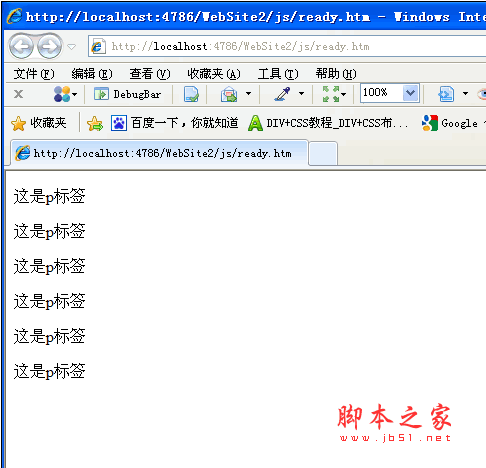In Jquery, $.map() and $.each() are used to operate arrays:
First is an ordinary array (an array with an index of integers):
$.map(arr,fn);
Call the fn function on each element in the array to process them one by one. , the fn function will process and return the last new array
var arr = [9, 8, 7, 6, 5, 4, 3, 2, 1];
var newarr = $.map(arr , function(item) {return item*2 });
alert(newarr);
$.each(array,fn) calls the fn function to process each element of the array, and there is no return value
var arr = [9, 8, 7, 6, 5, 4, 3, 2, 1];
$.each(arr, function(key, value) { alert("key:" key "value:" value); });
You can also omit the parameters of the function. At this time, this can get the value of the current element traversed
var arr = [9, 8, 7, 6, 5, 4, 3, 2, 1];
$.each(arr, function() { alert(this); });
Then there is an array of key-value pairs whose index is a string. For this type of array,
Generally use $.each(array,fn) to operate:
var arr = { "jim": "11", "tom": "12", "lilei": "13" };
$.each(arr, function(key, value) { alert("Name:" key "Age:" value); });
Of course, you can also use a function without parameters to traverse;
When This type of data can be obtained from the server side as follows:
Server side:
<%@ WebHandler Language="C#" Class="Handler" %>
using System;
using System.Web;
using System.Web.Script.Serialization;
using System.Collections.Generic;
public class Handler : IHttpHandler {
public void ProcessRequest (HttpContext context) {
context.Response.ContentType = "text/plain";
Person p1 = new Person { Age = "22", Name = "tom" };
Person p2 = new Person { Age = "23", Name = "jim" };
Person p3 = new Person { Age = "24", Name = "lilei" };
IList
persons = new List {p1,p2,p3};
JavaScriptSerializer js = new JavaScriptSerializer();
string s= js.Serialize(persons);
context.Response.Write(s);
}
public class Person
{
public string Name { get; set; }
public string Age { get; set; }
}
public bool IsReusable {
get {
return false;
}
}
}
First instantiate three person objects, then put them into a collection, and finally serialize this collection into a string stream to the client;
Client:
The client passes the background through $.parseJSON() The string is converted into a js array object. Next, we use the method of operating ordinary arrays to operate the obtained array
The third is the Jquery object array obtained through the tag selector,
The effect of running in the browser is:

After the dom is loaded, text is dynamically added to each p element , first $("p") obtains the collection of p tags, which is equivalent to document.getElementByTagName in Javascript, except that what is obtained here is an array of Jquery objects, so that Jquery has the inherent implicit iteration function, and the following text(" This is the p tag") operation iterates to each P tag. We can also explicitly call the each function to display the Jquery object array obtained by iteration. The following code can also achieve the above effect:


 What are the definitions of arrays?
What are the definitions of arrays?
 js string to array
js string to array
 Array initialization method
Array initialization method
 c array initialization method
c array initialization method
 How to find the maximum and minimum value of array elements in Java
How to find the maximum and minimum value of array elements in Java
 How to remove the first few elements of an array in php
How to remove the first few elements of an array in php
 Summary of java basic knowledge
Summary of java basic knowledge
 Zero-based Java self-study tutorial
Zero-based Java self-study tutorial




